
ESA Top Multimedia
Earth from Space: The Mekong Delta
 Earth from Space: The Mekong Delta
Earth from Space: The Mekong DeltaThe eponymous NGC 3783
 The eponymous NGC 3783
The eponymous NGC 3783Rare sighting of ‘doomed’ SOHO comet during solar eclipse
 Photo of total solar eclipse
Photo of total solar eclipseReady to fly
Asteroid photobombs Hubble snapshot of Galaxy UGC 12158

This NASA/ESA Hubble Space Telescope image of the barred spiral galaxy UGC 12158 looks like someone took a white marking pen to it. In reality it is a combination of time exposures of a foreground asteroid moving through Hubble’s field of view, photobombing the observation of the galaxy. Several exposures of the galaxy were taken, which is evidenced by the dashed pattern.
The asteroid appears as a curved trail as a result of parallax: Hubble is not stationary, but orbiting Earth, and this gives the illusion that the faint asteroid is swimming along a curved trajectory. The uncharted asteroid is inside the asteroid belt in our Solar System, and hence is 10 trillion times closer to Hubble than the background galaxy.
Rather than being a nuisance, this type of data is useful to astronomers for doing a census of the asteroid population in our Solar System.
[Image description: This is a Hubble Space Telescope image of the barred spiral galaxy UGC 12158. The majestic galaxy has a pinwheel shape made up of bright blue stars wound around a yellow-white hub of central stars. The hub has a slash of stars across it, called a bar. The galaxy is tilted face-on to our view from Earth. A slightly S-shaped white line across the top is the Hubble image of an asteroid streaking across Hubble’s view. It looks dashed because the image is a combination of several exposures of the asteroid flying by like a race car.]
Dubai floods seen from space
 Dubai floods seen from space
Dubai floods seen from spaceHoisting EarthCARE from the base of its container
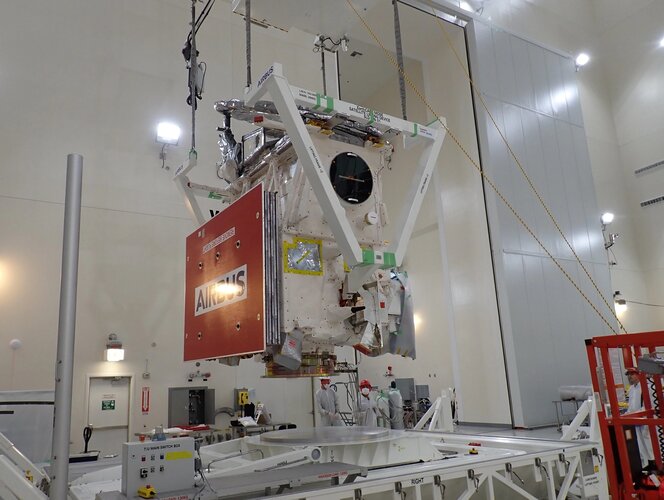 Hoisting EarthCARE from the base of its container
Hoisting EarthCARE from the base of its containerPlanetary defenders assemble!
 Planetary defenders assemble!
Planetary defenders assemble!The Incredible Adventures of the Hera mission – The Missing Puzzle Piece

Meet Hera, our very own asteroid detective. Together with two CubeSats – Milani the rock decoder and Juventas the radar visionary – Hera is off on an adventure to explore Didymos, a double asteroid system that is typical of the thousands that pose an impact risk to planet Earth.
In September 2022 NASA’s DART spacecraft tested if it was possible to divert an asteroid by giving it a shove – and found out that it was! Important knowledge, should we wish to avoid going the same way as the dinosaurs. Astronomers can observe from afar how the smaller asteroid’s orbit has shifted since DART’s impact, but there is still a missing piece of the puzzle if we want to fully understand how ‘kinetic impacting’ works in practice. Suitable for kids and adults alike, this episode of ‘The Incredible Adventures of Hera’ explains why ESA’s asteroid detective and its CubeSat assistants need to get up close and personal to shine light on this cosmic mystery.
Watch the other episodes of The Incredible Adventures of the Hera Mission
ESA astronaut class of 2022 graduation ceremony

As they reach the end of one year of rigorous basic astronaut training, ESA astronaut candidates Sophie Adenot, Rosemary Coogan, Pablo Álvarez Fernández, Raphaël Liégeois, Marco Sieber and Australian Space Agency astronaut candidate Katherine Bennell-Pegg will receive astronaut certification at ESA’s European Astronaut Centre on 22 April 2024.
The group was selected in November 2022 and began their training in April 2023.
Basic astronaut training provides the candidates with an overall familiarisation and training in various areas, such as spacecraft systems, spacewalking, flight engineering, robotics and life support systems, as well as survival and medical training.
Following certification, the new astronauts will move on to the next phases of pre-assignment and mission-specific training, paving the way for future missions to the International Space Station and beyond.
Join us for the graduation ceremony live on ESA Web TV on Monday 22 April from 10:00 – 11:30 CEST.
A tour of the International Space Station with Andreas Mogensen
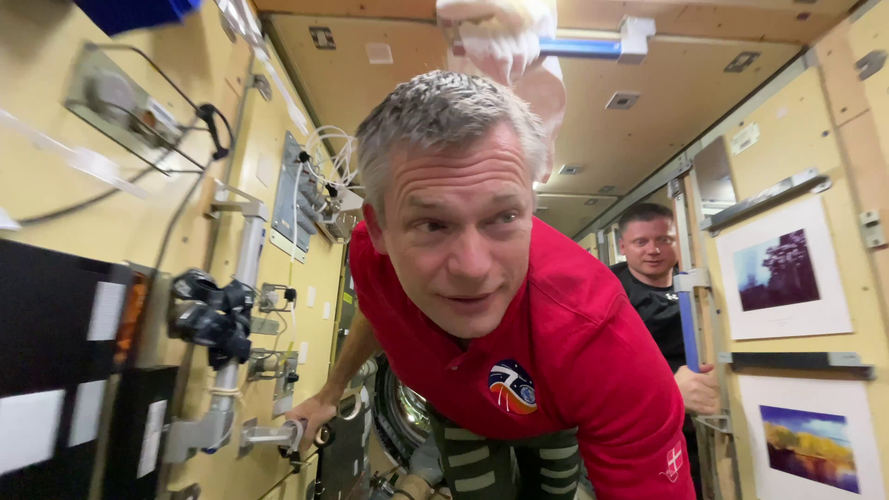
On the last day of his Huginn mission, ESA astronaut Andreas Mogensen takes us on a tour of the place he called home for 6 months: the International Space Station. From the beautiful views of Cupola to the kitchen in Node 1 filled with food and friends and all the way to the science of Columbus, the Space Station is the work and living place for astronauts as they help push science forward.
Hidden in a dark cloud
 Hidden in a dark cloud
Hidden in a dark cloudEarth from Space: The Ebro Delta
 This Copernicus Sentinel-2 image shows the delta of the Ebro River on the northeast coast of Spain.
This Copernicus Sentinel-2 image shows the delta of the Ebro River on the northeast coast of Spain.ESA X Epic Games Lunar Horizons collaboration
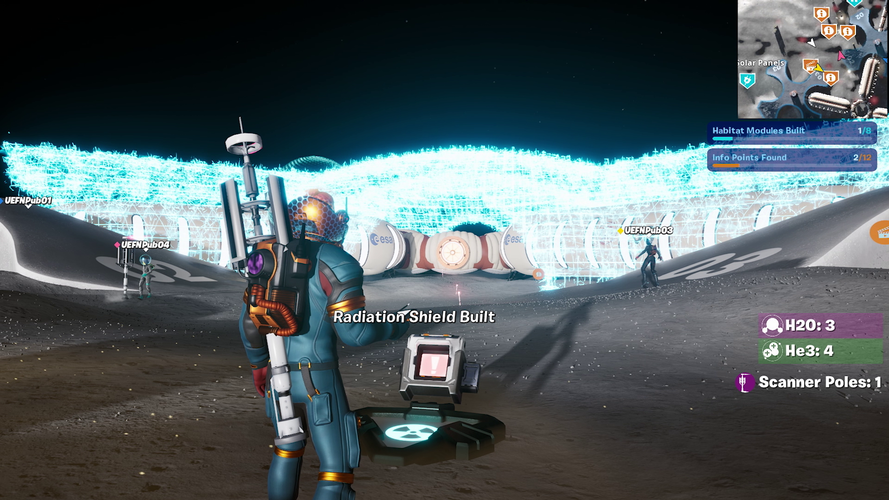
Lunar Horizons: the story behind the making of the ESA X Epic Games collaboration.
Astro Chat with Sophie Adenot | ESA Explores podcast
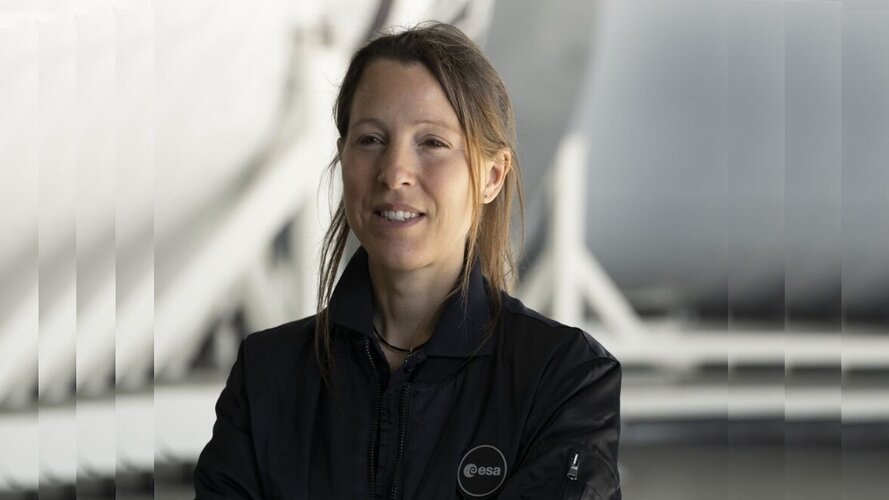
Sophie Adenot is one of ESA's five astronaut candidates currently undergoing basic astronaut training at the European Astronaut Centre in Cologne, Germany. Tune in as she shares her experiences in astronaut training, her favourite lessons, as well as tips on maintaining the balance and achieving your dreams.
This is Episode 6 of our ESA Explores podcast series introducing the ESA astronaut class of 2022, recorded in November 2023.
Music and audio editing by Denzel Lorge. Cover art by Gaël Nadaud.
Artemis II Orion in all its glory

At NASA’s Kennedy Space Center in Florida, USA, the Orion vehicle that will be used for Artemis II is getting ready for this first mission to bring humans around the Moon and back in over 50 years.
The vehicle consists of several parts: the conical crew module on top, where the four astronauts will live during the mission; the crew module adapter directly beneath it, connecting the crew module above and service module below; the cylindrical European Service Module, the powerhouse of Orion providing the crew vehicle with electricity, propulsion, thermal control, air and water; and the conical spacecraft adaptor, which connects Orion to the Space Launch System mega Moon rocket.
The Artemis II vehicle stack was moved into a vacuum chamber at the Kennedy Space Center, where it will undergo several tests to ensure it can withstand the harsh conditions of space. The electromagnetic compatibility and interference tests as well as high-altitude vacuum tests will take place in one of two historical chambers also used to test spacecraft during the Apollo era.
Blowtorch effect of satellite reentry
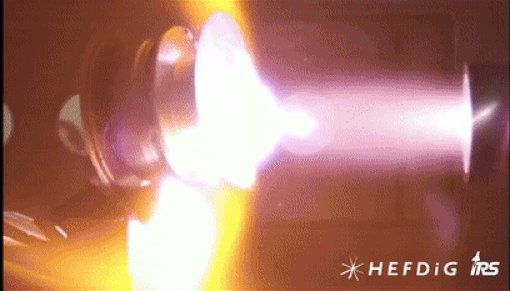 Blowtorch effect of satellite reentry
Blowtorch effect of satellite reentrySpace Team Europe for Ariane 6: Michel Bonnet
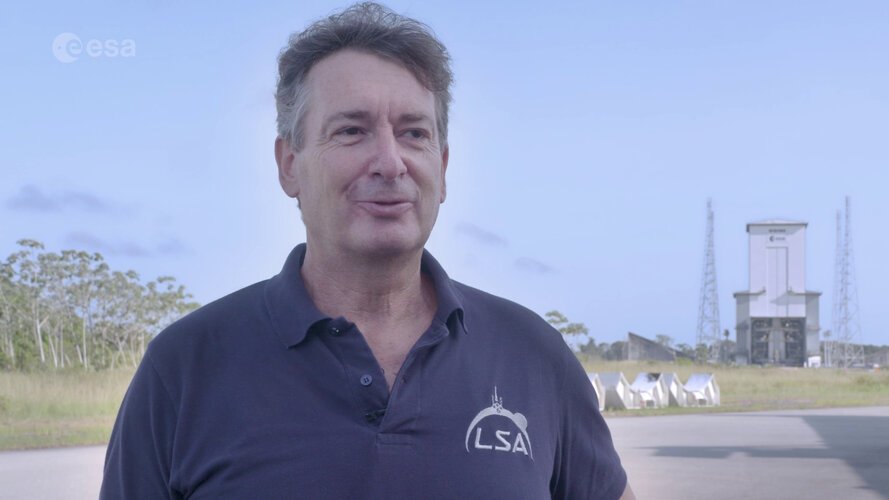
They say it takes a village to raise a child. To launch a rocket, we have the combined expertise and passion of Space Team Europe. Michel Bonnet is one of many making the first Ariane 6 launch possible, and has been interviewed as part of a series highlighting some of the people that make up this dream team.
“Who has not dreamed of working in the space sector?” he says, recalling how he built small rockets as a teenager using sodium chlorate, sulphur and sugar. In 1995, after years of work with helicopters and nuclear submarines, Michel started work in the space sector. For Ariane 6’s first flight, he is the Inaugural Flight Principal covering mission preparation, including the several small satellites being launched, and the launch campaign follow-up.
Michel is also head of a team of six engineers who are together working on the future possibilities for Ariane 6, often focussing on potential exploratory missions after 2030 and what modifications would be necessary to the launcher to make them feasible.
Stay tuned for more from #SpaceTeamEurope: an ESA space community engagement initiative to gather European space actors under the same umbrella sharing values of leadership, autonomy, and responsibility.
Find more videos from Space Team Europe.
Simulating tumbling reaction wheel reentry
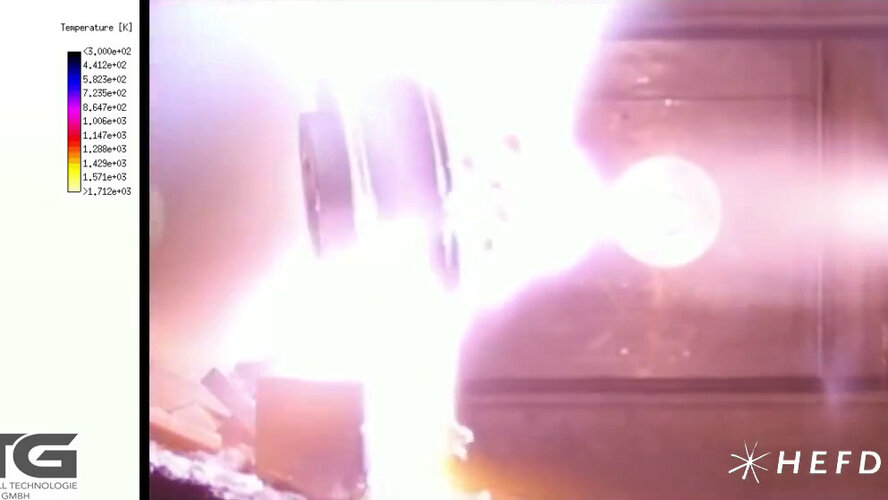
A reaction wheel – one of the heaviest parts of a space mission, its changing rotation used to shift a satellite’s orientation – seen in a plasma wind tunnel belonging to the High Enthalpy Flow Diagnostics Group (HEFDiG) at the University of Stuttgart Institute of Space Systems (IRS). Arc-heated gas in the test chamber reaches speeds of several kilometres per second, reproducing reentry conditions, while the reaction wheel itself is being rotated, reproducing the tumbling that takes place as a satellite plunges through the atmosphere.
The reaction wheel itself comes from Collins Aerospace in Germany, which has supported Design for Demise (D4D) activities for many years and introduced several modifications to their TELDIX reaction wheel making it more likely to come apart during satellite reentry in support of demisability.
This test clip was presented during this year’s Space Mechanisms Workshop at ESA’s ESTEC technical centre in the Netherlands, focused on current and future requirements and guidelines to reduce the risk from orbital debris, including ESA’s Zero Debris Charter. The event was attended by more than 130 space mechanisms specialists from European industry and academia.
Total solar eclipse 8 April 2024
 Total solar eclipse 8 April 2024
Total solar eclipse 8 April 2024Proba-2 sees the Moon eclipse the Sun
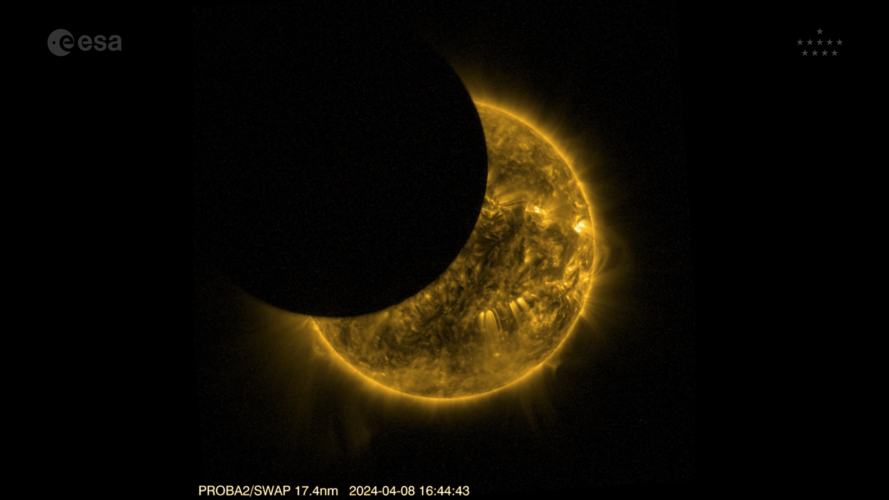
ESA’s Proba-2 captured two partial solar eclipses on 8 April 2024.
A solar eclipse occurs when the Moon passes between Earth and the Sun, totally or partially blocking the Sun from Earth’s point of view. On 8 April, lucky viewers across North America witnessed the Moon blocking out the Sun in its entirety for a few minutes, while those north and south of the ‘total eclipse path’ witnessed a partial eclipse.
Throughout the eclipse period, the Moon crossed Proba-2’s field of view twice, appearing as a partial solar eclipse. The satellite flies around 700 km above Earth’s surface in what is called a Sun-synchronous orbit, each orbit lasting around 100 minutes.
The video was produced from images taken by Proba-2’s SWAP telescope, which observes the Sun in extreme ultraviolet light. At these wavelengths, the turbulent nature of the Sun's surface and corona – the Sun's extended atmosphere – become visible. These measurements have to be made from space, because Earth’s atmosphere doesn’t allow such short wavelengths of light to pass through.
A total solar eclipse provides a unique opportunity to see the Sun’s corona from Earth's surface, using visible light. As the Moon blocks most of the Sun’s bright light, the faint corona can be discerned. By comparing the SWAP ultraviolet images to what is seen by (visible light) telescopes on Earth, we can learn about the temperature and behaviour of different structures in the corona.
Other solar missions also made the most of the unique measurement opportunities provided by the eclipse. For example, ESA’s Solar Orbiter was positioned close to the Sun and at a 90-degree angle from Earth’s view throughout the eclipse. This allowed it to complement Earth-based observations by monitoring the Sun’s corona side-on, including any solar eruptions pointing in Earth’s direction.
Lunar I-Hab mock-up

The mock-up of Lunar I-Hab is a full-scale replica of the ESA habitation module on the lunar Gateway. Engineers will use the mock-up to finetune the design of the module’s interior, ensuring future astronauts can make their way around effectively and safely.
Astronauts with real-life experience on the International Space Station will be part of the process. During a testing phase known as the “human in the loop” campaign, they will go inside the mock-up to give feedback on the interior’s design, from mitigating possible safety hazards to simply ensuring they can reach everything.
Lunar I-Hab’s mock-up initially has a low-fidelity level, meaning the inside of the cabin is outfitted with placeholders of equipment that match the shape of the contents but do not function like them. As the testing campaign progresses, the mock-up will be outfitted with higher fidelity configurations. Engineers will refine the design of Lunar I-Hab until the critical design review, where the module’s design will be finalised with all international partners contributing to the Gateway.
Lunar I-Hab is one of ESA’s key contributions to the Gateway, the first international space station around the Moon that will support the most distant human space missions ever attempted as part of NASA’s Artemis programme.
Total solar eclipse seen from space
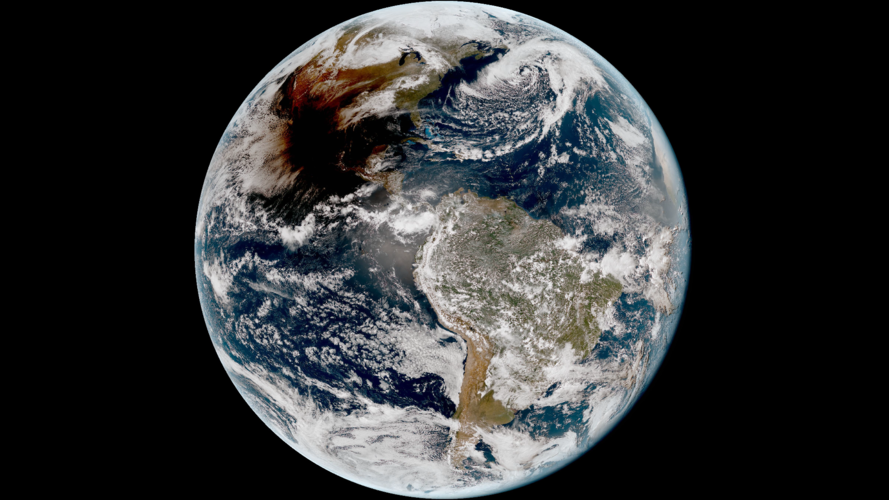
A total solar eclipse swept across North America yesterday, blocking out the Sun momentarily with parts of the continent plunged into darkness. Geostationary satellites orbiting 36 000 km away captured images of the rare celestial event.
These images, captured by the Geostationary Operational Environmental Satellite (GOES-16), captured the moon’s shadow moving across North America from approximately 16:00 to 23:00 CEST (15:00 to 22:00 BST.)
A total solar eclipse occurs when the Moon passes between the Sun and Earth and, for a short period, blocks the face of the Sun, save for a visible ring of light, known as the Sun’s corona.
The track of the moon’s shadow across Earth’s surface, called the path of totality, spanned across the North American continent – from Mexico to the very eastern tip of Canada.
The GOES series is a collaborative development and acquisition effort between National Oceanic and Atmospheric Administration (NOAA) and NASA. The GOES-16 (GOES-East) satellite, the first of the series, provides continuous imagery and atmospheric measurements of Earth's western hemisphere and monitors space weather.
The Copernicus Sentinel-3 mission also captured images of the eclipse with its Sea and Land Surface Temperature Radiometer (SLSTR).
The eclipse also acts as a laboratory for researching what happens to weather when the Moon’s shadow passes over. The shadow makes air temperatures drop and can cause clouds to evolve in different ways. Data from GOES, Sentinel-3 and other satellites are now being used to explore these effects.
Copernicus Sentinel-3 captures images of solar eclipse over the Eastern Pacific
Biological resistance vibration test

The video shows a biological tolerance test, where the aquarium including three shrimps is submitted to vibrations. The goal was to determine the survivability of the species during the rocket launch and flight until delivery to the ISS. These tests, performed in June 2023, were successful as the shrimps showed remarkable resilience to simulated launch conditions.
Solar eclipses – and how to make them
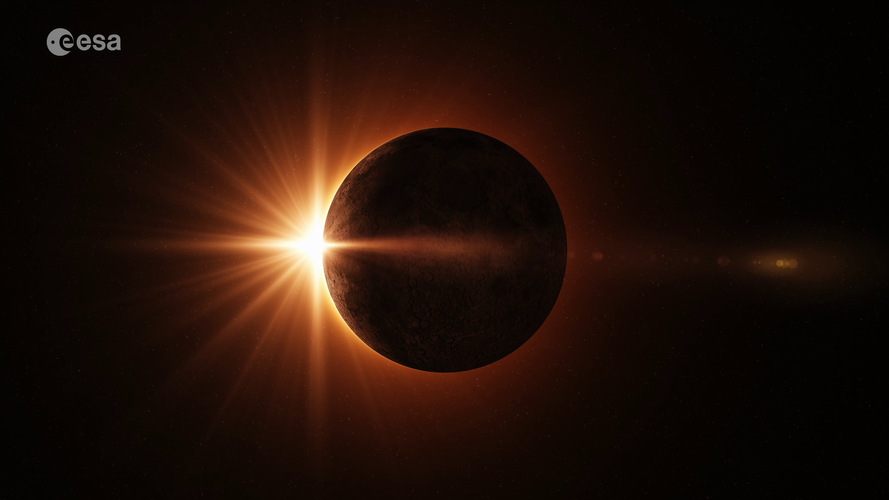
During a solar eclipse the Earth is plunged into darkness and the Sun’s ghostly atmosphere becomes visible. Scientists travel the globe to experience total solar eclipses, which occur for just a few minutes at a time every 18 months or so. But what exactly causes solar eclipses, and how do scientists try to make their own, including with ESA’s new Proba-3 mission?
Earth from Space: Victoria, Australia
 This Copernicus Sentinel-2 image features part of Victoria, a state in southeast Australia.
This Copernicus Sentinel-2 image features part of Victoria, a state in southeast Australia.Astro Chat with Pablo Álvarez Fernández | ESA Explores podcast
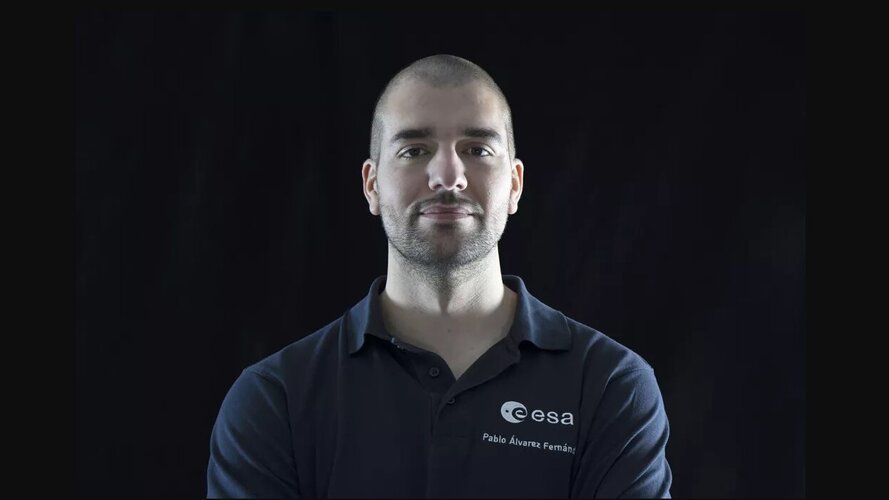
Pablo Álvarez Fernández, one of ESA's five astronaut candidates currently undergoing basic astronaut training at the European Astronaut Centre in Cologne, Germany, shares his experiences in astronaut training, his favourite lessons, and his view on the future of space exploration. Also, stay tuned to hear his favourite space-related quote and movie!
This is Episode 5 of our ESA Explores podcast series introducing the ESA astronaut class of 2022, recorded in November 2023.
Music and audio editing by Denzel Lorge. Cover art by Gaël Nadaud.
Two’s company
 Two’s company
Two’s company3D-bioprinted blood vessel
 3D-bioprinted blood vessel
3D-bioprinted blood vesselPage 1 de 3
- 1
- 2
- 3
- Suivante
- Dernière »



